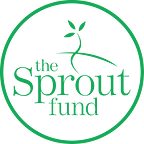Badge Design Tools
At Sprout, we’ve been helping people design digital badges since 2014. Over the years, we’ve learned just how challenging and rewarding this work can be. Your goal is to create digital badges that are appealing to earners, useful for issuers, and meaningful for endorsers. Most importantly, remember that the badge itself isn’t the point: What matters is the transformative learning that takes place within your educational programs. The badge helps tell the story of what your students learned.
We’ve developed a process to help you consider these questions and design your own badges. Feel free to download these worksheets to help you design your own digital badges. You can also email us at connect@sproutfund.org with questions and concerns.
Badge Self Assessment
Before you get started, ask yourself these questions to help you determine whether digital badges are the right fit for you. You can also download and print these questions using the Badge Self Assessment Worksheet linked below.
What is your motivation for using digital badges?
- What is your inspiration for exploring badges?
- What problem will badges help you solve?
- How can badges add value for earners, issuers, and endorsers?
What opportunities are there for badging within your programs?
- Where can might badges fit into your existing learning experiences?
- Can you identify badgeable moments within your programs?
- How many badges should you design?
How will badges help you assess learning?
- How do you currently show what students learn in your programs?
- How can badges help you showcase learning outcomes in your programs?
- How can students use badges to better demonstrate what they’ve learned?
What gives your badges value?
- How can you make your badges valuable to earners, issuers, and endorsers?
- Are your badges aligned with existing learning standards?
- Do you badges align with established competencies in particular fields or professions?
What opportunities do your badges unlock for earners?
- Once someone earns a badge, what can they do with it?
- Is there a specific opportunity that’s unlocked for each badge?
- Who could endorse the badges you have developed, and what does that mean for earners?
How can you develop badge-enabled learning pathways?
- How can badges help you sequence your program’s learning activities?
- How can you use badges to connect multiple learning opportunities?
- What kinds of handoffs can be made within your organization, at other organizations, and online?
Badge Design Principles
Here are some key things to consider when designing your digital badges. You can also download and print these questions in the Design Principles Guide linked below.
- Grain Size: Make sure that your badgeable experiences are big enough to be meaningful but not so big that they seem unattainable. How can you right-size your badges?
- Activities: It is often best to develop badges based on existing activities. How might a badge help students recognize what they’ve learned?
- Timing: Think about when students can earn badges within your program. Do badges reward meaningful milestones along the way or is it earned at the end of your program?
- Pathway: If you design more than one badge, think about how your badges relate to one another. How do your badges lead from one to the next?
- Standards: Consider how your badge might align with formal educational standards or competency-based standards. Can you map your badges to standards?
- Opportunities: Badges should unlock a specific opportunity. What opportunities are unlocked for earners once they reach certain milestones in your programming?
Badge Design Worksheet
On the front of the worksheet, describe your badge. Start at the left side of the page and work your way to the right — note how each column leads to the next one. Begin by identifying the competency you want to assess. Next, list the evidence associated with that competency. Then, list the activities that produce the evidence. Lastly, write an enticing description of the badge.
On the back of the worksheet, consider your badge in context. Use this Value Triangle to consider the needs and interests of three different audiences: earners (students, learners, and other people who earn badges), issuers (schools, nonprofits, and other organizations who issue badges), and endorsers (admissions officers, hiring managers, and other gatekeepers who care about what students have learned). In each corresponding box, write down why the badge has value for that audience.
- Opportunity Unlocked: Write down the opportunities that are unlocked for earners as a result of earning this badge.
- Connections: Write down how this badge connects with other learning opportunities within your organization, outside your organization, and online.
Badge Pathway Worksheet
Badges can represent steps along a student’s learning journey and help students more effectively tell the story of the knowledge, skills, and dispositions they learned along the way. If you have developed more than one badge, think about how those badges fit together as part of a student’s learning pathway. Use this worksheet to sketch out all of the badges you have developed and how they relate to one another.
